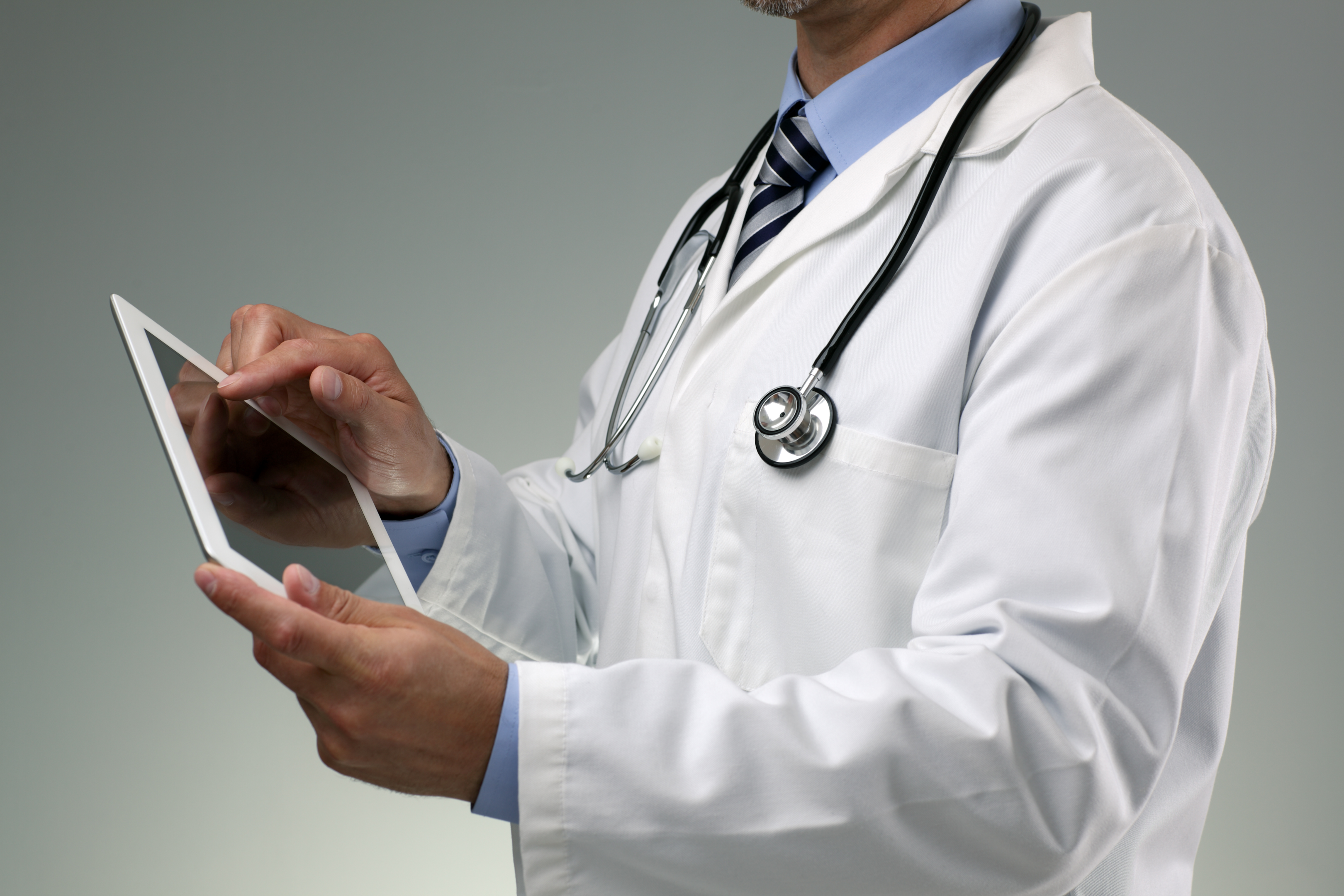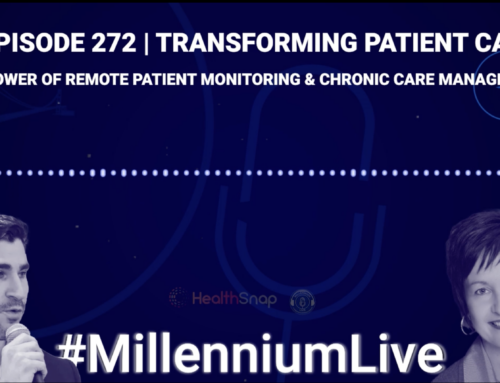Remote Patient Monitoring (RPM) platforms are increasingly being accepted as both healthcare providers and patients continue to discover their value. Many providers are now able to serve more patients, achieve better patient outcomes, lower the costs of care, and add new revenue streams with the adoption of Remote Patient Monitoring.
Similarly, many patients feel RPM services and devices provide them with increased access to care and give them a greater sense of reassurance and more control over the management of their chronic conditions. In this post, we take an in-depth look at some of the key benefits of Remote Patient Monitoring.
Benefits of Remote Patient Monitoring – For Patients

Data-Driven Care Helps Improve Health Outcomes
A comprehensive Remote Patient Monitoring platform helps improve the quality of care because the clinicians get near real-time access to targeted and accurate patient data. Health emergencies, hospitalizations, and risk of complications are reduced as any significant change in the patient’s vital signs is detected faster.
More accurate patient health patterns can be established because of access to large amounts of daily data, enabling the care team to take appropriate remedial actions, adjust the treatment plan and medications, or guide the patient to make the necessary changes to their diet, exercise, and lifestyle habits.
The ability to collect health data consistently and continuously allows the patient’s care team to gain important insights into how, why, or when certain changes in the patient’s health parameters are happening. The ability to monitor and track chronic conditions, such as diabetes, congestive heart failure, hypertension, or chronic obstructive pulmonary disease (COPD) whether the patient is at home, workplace, on vacation, or in transit helps in managing the patient’s health much more effectively with improved outcomes.
Better Patient Compliance Makes Treatments More Effective
Well-built Remote Patient Monitoring platforms involve the use of patient-friendly devices that require no configuration or setup, and can work easily with cellular connectivity. Unlike complex medical technologies that may often intimidate patients, cellular RPM devices are highly user-friendly, comfortable, and engaging by design.
With the patient’s active involvement in the generation of their own medical data, they feel more like a partner in their own care management, rather than just a passive recipient of healthcare. This encourages them to adhere to the provider’s care instructions and meet the data sharing requirements as expected for their chronic condition.
The increased level of engagement and communication between the patient and the care team leads to a relationship of trust, enabling the patient to better understand the importance of complying with their care plan and successfully completing their treatment. Patients feel more accountable and make a greater effort to contribute to their own recovery.
Another key factor in successful patient compliance is the increased visibility that an RPM platform provides to the patient about changes occurring to their own health. For example, when a diabetic patient directly notices in their glucometer readings that eating sugary foods increases their blood glucose levels abnormally, they will have a higher motivation to improve behaviors and adhere to the care plan.
Higher Level of Patient Assurance, Comfort, and Convenience
Many patients with one or more debilitating chronic conditions may find it too difficult to frequently make in-patient visits to their healthcare provider. There are also increased concerns about contracting an infection in the course of frequent physical hospital appointments. For these reasons, many patients feel more comfortable using Remote Patient Monitoring platforms to reduce their physical visits.
Many patients may have busy work schedules or household responsibilities, making it more difficult for them to take time off from work, plan childcare, and pay for transportation costs to make an in-person visit to their doctor. Some of them are functionally limited due to their chronic conditions, making it difficult or impossible to arrange transportation to an on-site doctor’s appointment. Therefore, they may prefer utilizing the convenience of an RPM device to transmit their health data automatically in near real-time to their medical provider rather than disrupting their busy schedule.
In addition to the physical convenience and comfort, Remote Patient Monitoring has more to offer to the patients in terms of a valuable assurance that there is a knowledgeable and dedicated care team continuously looking out for their health and well-being. For instance, for a patient recovering from a serious heart attack, having the knowledge that a professional healthcare team is monitoring their vitals can be a source of priceless reassurance.
Gives the Patients a Greater Sense of Control Over Their Health
Remote Patient Monitoring empowers the patients to participate in the management of their chronic conditions and achieve better control over their own health. When patients follow a traditional non-RPM care plan, they will typically visit their GP or a specialist, receive a list of do’s and don’ts and a prescription for medications, and then go about with their everyday routine.
On the other hand, with Remote Patient Monitoring, the patient has access to every health data point about their own chronic condition. They can notice the patterns over time and make more informed choices and decisions based on their own observations and experience. The RPM platforms bring a greater level of transparency and lower the chances of patients feeling helpless, unaware, or entirely dependent on the clinician’s advice for the sake of their own health and well-being.
Dedicated RPM care providers can also help patients achieve a greater sense of control over their own treatment by using the platform to educate them about how compliance, lifestyle, or behavior modifications can influence health outcomes. Patients can receive reminders, insights, and tips on diet, fitness, and stress management and stay more vigilant and committed to improving their health and wellness.
Benefits of Remote Patient Monitoring – For Providers

Enables the Transition from Episodic Reactive Care to Ongoing Proactive Care
The healthcare industry is going through a gradual paradigm shift from fee-for-service care approach to a value-based care model. Value-based healthcare approach aims to improve health outcomes while lowering costs and focuses on the financial interests of not just the patients, but also healthcare providers and health systems.
As a part of this shift towards value-based care models, healthcare delivery is transitioning from a reactive, episodic, in-clinic care approach to a proactive and continuous care model. Remote Patient Monitoring is a critical component of this new model. Advanced RPM platforms enable healthcare providers to deliver continuous care to patients for positive health outcomes, while also enhancing their own bottom line – thereby creating a win-win for all.
Reduces Healthcare Costs and Lowers Hospital Readmissions
With Remote Patient Monitoring, healthcare providers have an increased ability to track the variations in a patient’s chronic condition in near real-time. This mitigates the risk of medical emergencies, hospitalizations, readmissions, and visits to the doctor’s clinic. The preventative care approach inherent to the RPM model also helps cut down the long-term costs associated with disease complications, treatment failures, and post-operative recovery issues. The costs of consulting, testing, evaluations, and re-treatment are also reduced.
According to a Kaiser Family Foundation report, preventable re-hospitalizations of the elderly continue to pose a persistent challenge, costing hundreds of millions of dollars annually in Medicare. Studies have shown that a significant number of readmissions within 30 days of discharge could be prevented through more effective care and attention to the patients once they leave the hospital. This is where Remote Patient Monitoring can make a key difference.
Proven and reliable cellular technology-based RPM service providers can collect valuable patient data through multiple devices. The data is then transmitted to their HIPAA-compliant platform. The healthcare provider’s care teams can receive the data in near real-time through efficient dashboards with advanced analytics, or the in-house care team of the RPM Company can analyze the data and alert the healthcare provider when the patient data reveals a new concern. This way a timely medical intervention can be made before a patient needs hospitalization.
Helps Providers Retain and Serve More Patients
Patient surveys in recent years have shown that a growing number of patients are interested in utilizing Remote Patient Monitoring platforms and sharing medical data regarding their chronic conditions to achieve improved health outcomes. Patients diagnosed with chronic conditions, such as diabetes, high blood pressure, congestive heart failure (CHF), and obesity-related complications increasingly expect their medical providers to offer RPM services.
According to data published by Insider Intelligence, one out of four US patients is expected to use Remote Patient Monitoring devices by 2025. The same report also said that the use of RPM equipment has contributed to the achieving patient satisfaction score of more than 90% at the University of Pittsburgh Medical Center. In particular, seniors who have a higher rate of multiple chronic diseases as a cohort, are driving a robust return on investment for healthcare providers through Remote Patient Monitoring technology.
A research study by Deloitte revealed that people today are more invested in assuming responsibility for their own healthcare. This includes how they interact and engage with their medical providers. Participants in the Deloitte study said that even when the pandemic-related concerns are over, they would prefer to continue using virtual healthcare. Respondents from Gen X and Baby Boomer segments were particularly enthusiastic, with as many as 80 percent of them saying they were likely to continue using virtual care approaches post-pandemic.
Creates Additional Revenue Streams for Healthcare Providers
With Remote Patient Monitoring, healthcare providers can dramatically increase their access to various new patient segments that they may not have been able to reach with traditional in-clinic care. As part of telehealth and telemedicine, RPM programs can cover a range of patients, including seniors, patients with chronic illnesses, emergency patients, injured persons, and premature babies.
Moreover, geographical boundaries and barriers are largely removed with a robust RPM platform. Therefore, a healthcare provider can receive patients from different parts of the city or state, which may not have been possible with traditional in-clinic services. In particular, patients from underserved communities and those residing in remote or rural regions can also get increased access to care, while the healthcare provider also adds new revenue streams.
With Remote Patient Monitoring, healthcare companies can bill for a wide range of virtual interactions with patients, which helps increase their billable hours. Innovative care models, user-friendly cellular RPM devices, and robust analytics can help care providers acquire new patient segments, as well as identify rising-risk populations.
The Centers for Medicare and Medicaid Services (CMS) has created CPT codes exclusive to Remote Patient Monitoring, which can be billed in addition to E/M codes being billed by the medical providers for office visits. Reduction in no-shows and appointment cancellations with Remote Patient Monitoring also helps improve the provider’s revenue generation.
Mitigates the Incidence of Clinician Burnout
By 2034, according to estimates published by the Association of American Medical Colleges (AAMC), the US could face a shortage of up to 124,000 physicians, including shortfalls in primary as well as specialty care. When this is seen in the context of the high rates of increase in the number of people above 65 years of age, it reveals a rapidly growing healthcare burden across the nation.
Remote Patient Monitoring platforms offer a credible strategy to reduce the clinician burden and lower the incidence of clinician burnout while enhancing access to care for those who need it most. With reliable and patient-friendly RPM devices, primary care physicians and specialists as well as physician assistants and nurses can manage patient data more effectively and in a more collaborative digital environment.
When the primary care team receives support from medical specialists, clinical pharmacists, and population health experts centered on RPM data, it lessens the administrative and logistical burden, streamlines the workflows, improves job satisfaction, and provides relief from stress and burnout. When patients with chronic conditions require reduced in-person visits to the provider’s office, it increases the care team’s capacity to direct more of their time and resources to other patients requiring office visits.
Choose HealthSnap: The Leading RPM Platform to Improve Health Outcomes
Delivering continuous and proactive virtual care across high-risk chronic condition patient populations and throughout the care continuum is one of the most important healthcare requirements today. HealthSnap’s integrated and proven Remote Patient Monitoring platform is designed to support care coordination at scale. To learn more about our HITRUST-certified and HIPAA-compliant interoperable Remote Patient Monitoring platform, or to request a demo of our RPM program, call today at 888-780-1872 or click here to schedule a consultation.












Leave A Comment
You must be logged in to post a comment.